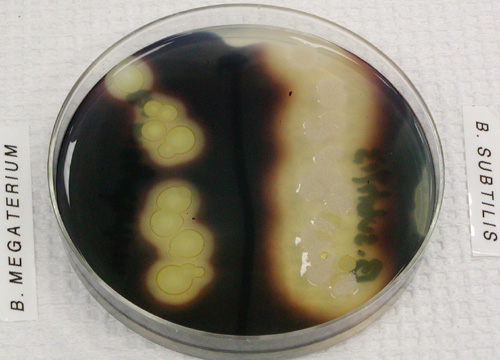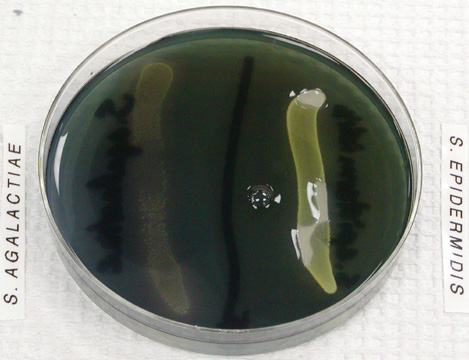Starch Hydrolysis
Starch agar is a differential medium that tests the ability of an organism to produce certain exoenzymes, including a-amylase and oligo-1,6-glucosidase, that hydrolyze starch. Starch molecules are too large to enter the bacterial cell, so some bacteria secrete exoenzymes to degrade starch into subunits that can then be utilized by the organism.
Starch agar is a simple nutritive medium with starch added. Since
no color change occurs in the medium when organisms hydrolyze starch,
we add iodine to the plate after incubation. Iodine turns blue, purple,
or black (depending on the concentration of iodine) in the presence of
starch. A clearing around the bacterial growth indicates that the organism
has hydrolyzed starch.
 |
Iodine has been added to this starch agar plate. The zone of clearing surrounding Bacillus megaterium and Bacillus subtilis indicate that both were able to hydrolyze starch. |
 |
Iodine has been added to this starch agar plate. The absence of any clearing indicates that neither Streptococcus agalactiae nor Staphylococcus epidermidis were able to hydrolyze starch. |
